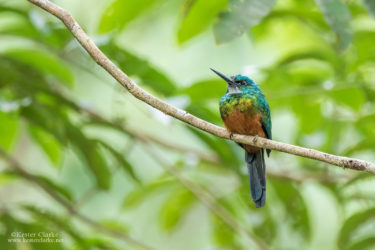
Green-tailed Jacamar
The Green-tailed Jacamar is a Guiana Shield endemic and feeds mainly on flying insects which it catches by sallying out from exposed perches.

The Green-tailed Jacamar is a Guiana Shield endemic and feeds mainly on flying insects which it catches by sallying out from exposed perches.
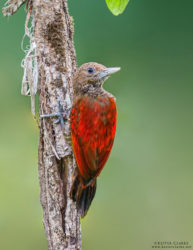
The Blood-coloured Woodpecker is confined to the coastal lowlands of the Guianas, where it is found in a variety of wooded habitats, including mangroves and plantations.
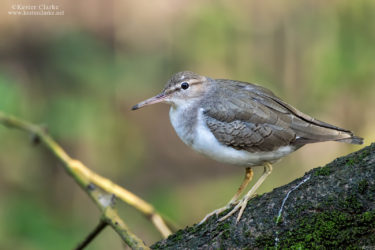
A Spotted Sandpiper (Actitis macularius) in a mangrove forest at Plastic City, Vreed-en-Hoop.
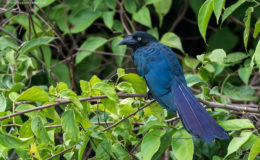
The Greater Ani are large cuckoo birds often found near water in mangrove swamps, and forest edges.
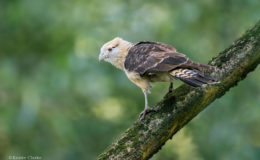
The Yellow-headed Cara-cara is one of the most commonly seen birds of prey in South American cities.
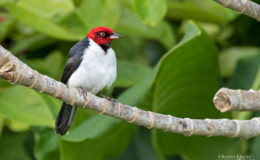
The Red-capped Cardinal gets its name from its crimson head. Immature birds have a brown head.
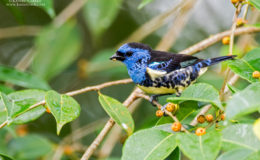
The Turquoise Tanager is mainly dark blue, with turquoise edging to the longest wing feathers and a yellowish lower underparts.
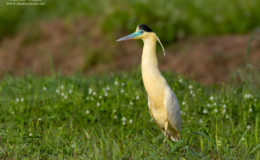
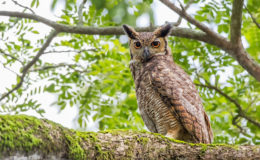
The Great Horned Owl is the most common owl in the Americas, and is recognizable by feather tufts on its head.
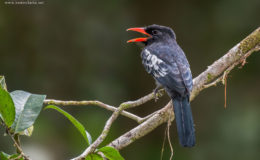
The Black Nunbird is glossy blue-black with white-grey edges on its wings and a bright orange-red beak, and belongs to the family of birds known as puffbirds.
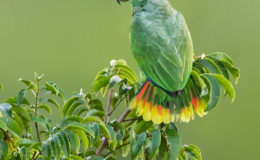
The Orange-winged Amazon is a very popular pet parrot. In the wild, they live communally in preferred palm trees where they can been seen in numbers at dawn and dusk.
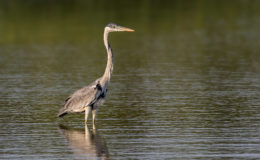
The Cocoi Heron is the largest heron in South America and can often be seen along hinterland rivers and marshes, as well agricultural canals, hunting for fish and frogs.
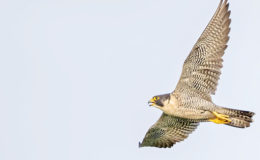
The Peregrine Falcon is best known for its speed, reaching over 320 km/h during its high speed dive during hunts, making it the fastest animal on earth.
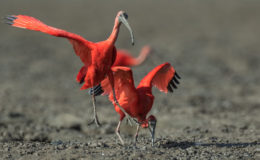
The Scarlet Ibis (also know locally as the “Curry-Curry”) is a wading bird with a luminous orange-red coloration.
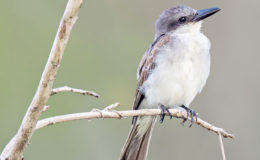
The Gray Kingbird is a large flycatcher with a black face mask, gray upperparts and mostly white underparts.
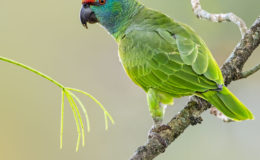
The Festive Amazon, also known as the Festive Parrot, is very similar to other Amazona parrots, but can be distinguished by their dark reddish lores and eyebrow.
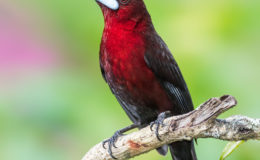
Silver-beaked Tanager Adult male Silver-beaked Tanagers are velvety crimson black with a deep crimson throat and breast.
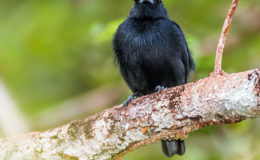
Male Black Manakins are glossy blue-black, while females are yellow-olive in colour.
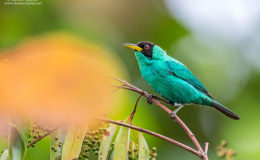
he Green Honeycreeper is a forest canopy species but it often descends along forest edges and clearings to take fruit and sometimes nectar.
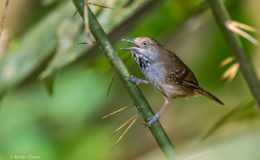
The Brown-bellied Antwren forages in the undergrowth of moist lowland forests for insects hidden among leaves, often as part of a mix-species flock of other typical antbirds.
The ePaper edition, on the Web & in stores for Android, iPhone & iPad.
Included free with your web subscription. Learn more.